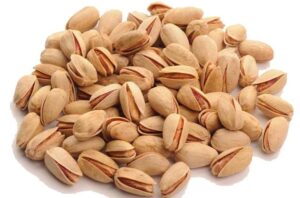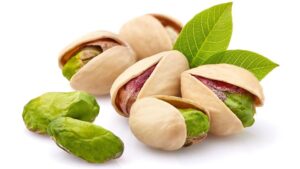Fig page
Fig Harvest
Figs should be allowed to ripen fully on the tree before they are picked. They will not ripen if picked when immature. A ripe fruit will be soft and starting to bend at the neck. Harvesting should be done gently to avoid bruising. Dried Fig Info
Fresh figs do not keep well and can be stored in the refrigerator for only a few days. Some fig varieties are delicious when dried. They take 4 – 5 days to dry under the sun and 10 -12 hours in a dehydrator. Dried figs can be stored for six to eight months. Dried Fig Info.

Irrigation
Young fig trees should be watered regularly until fully established. In dry western climates, water mature trees deeply at least every one or two weeks. Desert gardeners may have to water more frequently.
Mulch the soil around the trees to conserve moisture. If a tree is not getting enough water, the leaves will turn yellow and drop. Also, drought-stressed trees will not produce fruit and are more susceptible to nematode damage. Recently planted trees are particularly susceptible to water deficits, and often run out, and die. Dried Fig Info.
Pruning
Fig trees are productive with or without heavy pruning. It is essential only during the first years. Trees should be trained according to the use of fruit, such as a low crown for fresh-market figs.
Since the crop is borne on terminals of the previous year’s wood, once the tree form is established, heavy winter pruning, which causes loss of the following year’s crop should be avoided. It is better to prune immediately after the main crop is harvested, or with late-ripening cultivars, summer prune half the branches and prune the remainder the following summer. If radical pruning is done, whitewash the entire tree. Dried Fig Info.
Fertilization
Regular fertilizing of figs is usually essential only for potted trees or when they are grown on sand. Excess nitrogen encourages rank growth at the expense of fruit production, and the fruit that is produced often ripens improperly.
As a general rule, If the branches grew less than a foot the previous year fig trees should be fertilized. A total of 1/2 – 1 pound of actual nitrogen, divided into three or four applications beginning in late winter or early spring and ending in July should be applied.
Propagation
Ants are among the greatest pollinators. Because the flower of the fig tree attracts ants through the small opening at the end of the fruit. The ants go in search of the sweetness, picking up pollen on their feet.
This is brought to the next fruit. The flower is not visible, as it blooms inside the fruit. The small orifice visible in the middle of the fruit is a narrow passage, which allows a very specialized wasp, the fig wasp, to enter the fruit and pollinate the flower, where after the fruit grows seeds. Figs plants are easy to propagate through different methods.
Propagation using seeds is not the preferred method, since vegetative methods exist that are quicker and much better. The trade caravan routes of old spread figs far and wide, although possibly not as far and wide as the bird population of the world has managed to do over the centuries, with their propensity for eating the seeds through one end and popping them out of the other end with a little dose of fertilizer to ensure their survival in a new place.
Health, Nutrition
The Egyptians, being preoccupied with their digestion, had a habit of fasting. The fig having mild laxative properties appealed to them as food that was delicious as well as healthy. Figs are rich in iron, calcium, phosphorus, and potassium.
Vitamin C and B group vitamins are also present in small quantities. They are also a good source of fiber. Figs have the highest overall mineral content of all common fruits. A 40-gram (1/4 cup) serving provides 244 mg of potassium (7% of the DV), 53 mg of calcium (6% of the DV), and 1.2 mg of iron (6% of the DV). Figs are free from fat, sodium, and cholesterol.
The health benefits of figs include promoting healthy bowel function due to the high levels of fiber. Figs are amongst the most highly alkaline foods, making them useful in balancing the pH of the body. Figs are high in natural and simple sugars, minerals, and fiber. They contain good levels of potassium, calcium, magnesium, iron, copper, and manganese.
Dried figs contain an impressive 250mg of calcium per 100g, compared to whole milk with only 118mg. Figs are among the tastiest and most versatile of fruits, happy in company with honey, sugar, thin prosciutto, sweet spices such as ginger, cinnamon, and cloves, and the sharpness of lemon and orange. Dried Fig Info.


